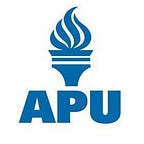Liability Regarding Complementary and Alternative Medicine (Part II)
By Dr. Gary L. Deel, Ph.D., J.D.
Faculty Director, School of Business, American Public University
This is the second article in a 10-part series discussing the duties of American medical professionals to disclose complementary and alternative medical treatments to patients.
Although the popularity of complementary and alternative medicine (CAM) in western society is relatively new, many of the practices it encompasses have been utilized for thousands of years, dating back to the very earliest civilizations. Many such practices are tied to the origins of the world’s ancient religions.
For example, most scholars agree that ayurveda is one of the oldest medicinal sciences that we know to have existed, dating back more than 5,000 years. Ayurveda is the traditional Hindu system of medicine, and it focuses on a belief in elements of life. Its remedial techniques conform closely to the spiritual context of Hindu scripture.
This type of relationship is not uncommon. In another example, Native Americans developed their own medical sciences based upon spiritual beliefs and “shamans,” medicine men or women who would serve as healers in conformance with their tribes’ religious rites in a holistic approach to wellness.
Traditional Chinese Medicine: An Ancient Form of Medical Treatment
One of the most prevalent and influential foundations of ancient medicine — and a sub-group of CAM techniques — is traditional Chinese medicine (TCM). It dates back to about 2200 BCE and has been practiced for thousands of years since.
TCM was developed on the belief in a life force — qi (pronounced CHEE) — and a focus on maintaining a healthy balance of that life force. Its therapies include yoga, tai chi, martial arts, massage, meditation, acupuncture, cupping, gua sha and herbal remedies.
The ancient Chinese developed a primitive but working body of knowledge on human ailments and remedial techniques for treatment and cure. Many of the founding principles of TCM are closely associated with ancient Chinese philosophy and the two most prominent religions in China, Taoism, and Buddhism.
The Chinese developed a belief around 500 BCE in the concept of yin and yang, which proposes a duality to all things in the universe. They used this duality to explain natural phenomena and to aid in their development of medicinal practice.
Ancient medicinal texts reveal that most ailments were thought to be caused by an imbalance of the yin and yang influences. To remedy the ailment, the patient’s qi must be manipulated to reestablish the desired balance. Beginning with the Qin and Han dynasties, before the birth of Christianity, the Chinese developed a working body of knowledge for medicinal practice that is still revered and studied today.
Following the European conquest of the Americas, medical skills were not a primary occupation in the West. Rather, they typically supplemented the skills of other professionals who primarily served as judges, magistrates, merchants, farmers and other tradesmen. Over time, the medical field eventually blossomed into an integral part of our modern society, establishing the concept of conventional medicine.
The Industrial Revolution and the Use of Allopathic Medicine
On the heels of the early 19th-century Industrial Revolution, western cultures began to focus on developing relations with eastern nations for economic growth. Through this effort they also spread western medicinal practices to the Orient. Over several revolutions and the emergence of China’s relatively recent “open door policy,” the Chinese government has come to embrace the integration of allopathy into their governmental healthcare design for its more than one billion people.
However, the same cannot be said of the reverse. Eastern practitioners now operate on a fundamentally parallel level to western doctors in terms of medical education, diagnostic training and treatment. However, western cultures have often been reluctant to show the same open-mindedness and welcoming outlook to the benefits of TCM.
Most western doctors have very little experience or education in the treatments of TCM. Traditional medical schools do not focus much on CAM, so for many practitioners their lack of knowledge about these methods is due to an educational system that does not promote such exposure.
However, still others outright condemn the practice and use of CAM treatments. Their hostility is often motivated by a combination of socio-cultural prejudices, ignorance of the nature of the remedies and their efficacy, horror stories of adverse effects, fiscal prerogatives, or simply a belief that such practices are nothing more than medical voodoo.
TCM Practitioners Often Require a License
Regardless of the reasons, this tendency by western doctors to avoid CAM treatments has nurtured a medical industry that is heavily biased toward allopathy and not as open to new ideas as it should be. Federal and state regulations now require that practitioners for some types of TCM be licensed as NDs (doctors of Naturopathic Medicine), not as MDs.
Despite the obstacles inhibiting the success of CAM in an allopathic-dominated industry, the growth of Chinese medicine and many other types of CAM in western society has been sustained and stable. The National Center for Complementary and Alternative Medicine (NCCAM) conducted studies on adult CAM use in the United States in 2002, 2007, and 2012.
Across all three studies, the proportion of American adults using CAM was roughly one-third. The 2007 and 2012 studies also found that roughly 12 percent of children were treated with CAM.
This consistency in demand over the past few decades has silenced skeptics who previously insisted that such alternative medical practices were just fads that would pass as quickly as they appeared. In part III, we’ll discuss how western medicine’s ignorance of CAM options can present legal and ethical issues in the practice of medicine.
About the Author
Dr. Gary Deel is a Faculty Director with the School of Business at American Public University. He holds a J.D. in Law and a Ph.D. in Hospitality/Business Management. Gary teaches human resources and employment law classes for American Public University, the University of Central Florida, Colorado State University and others
